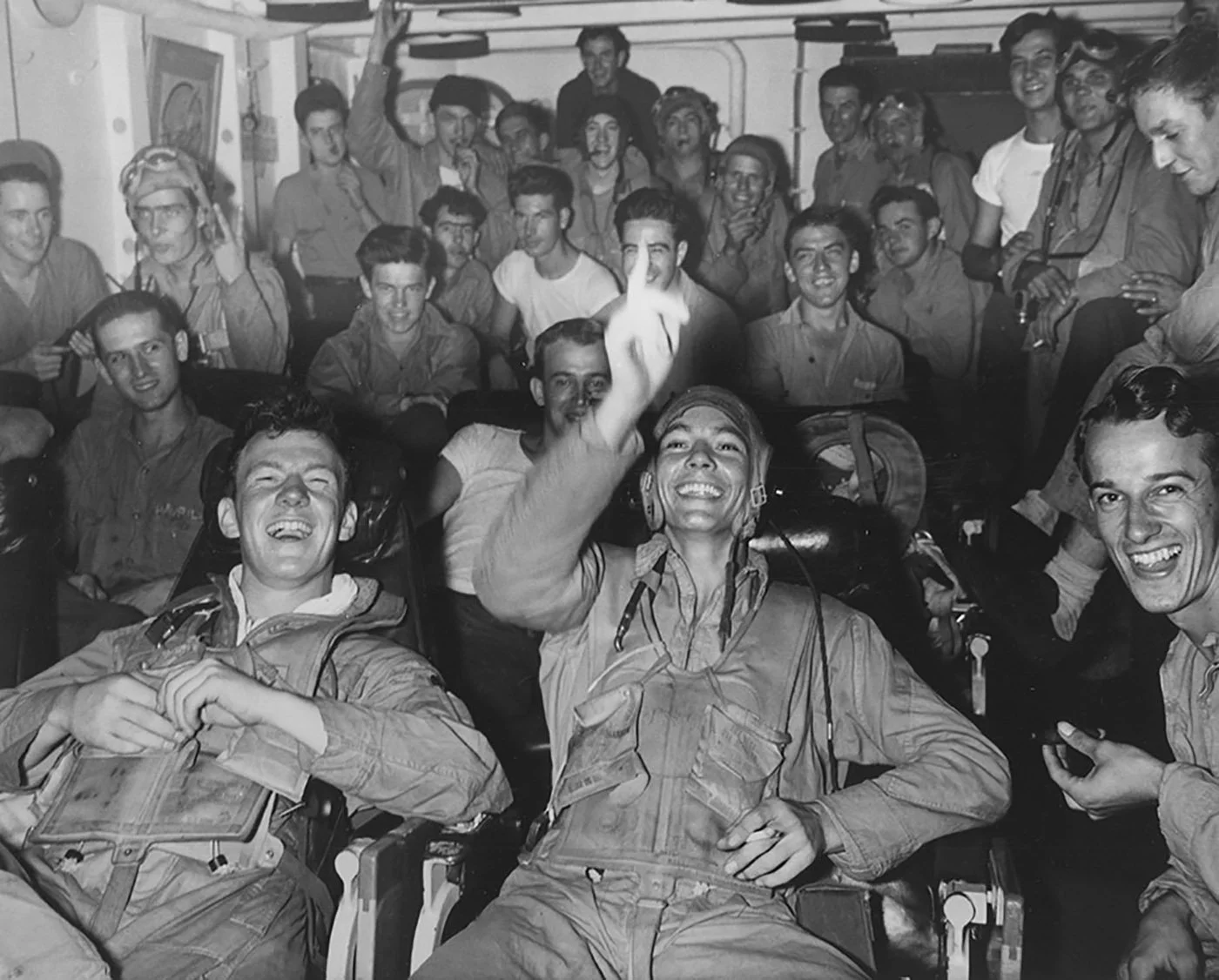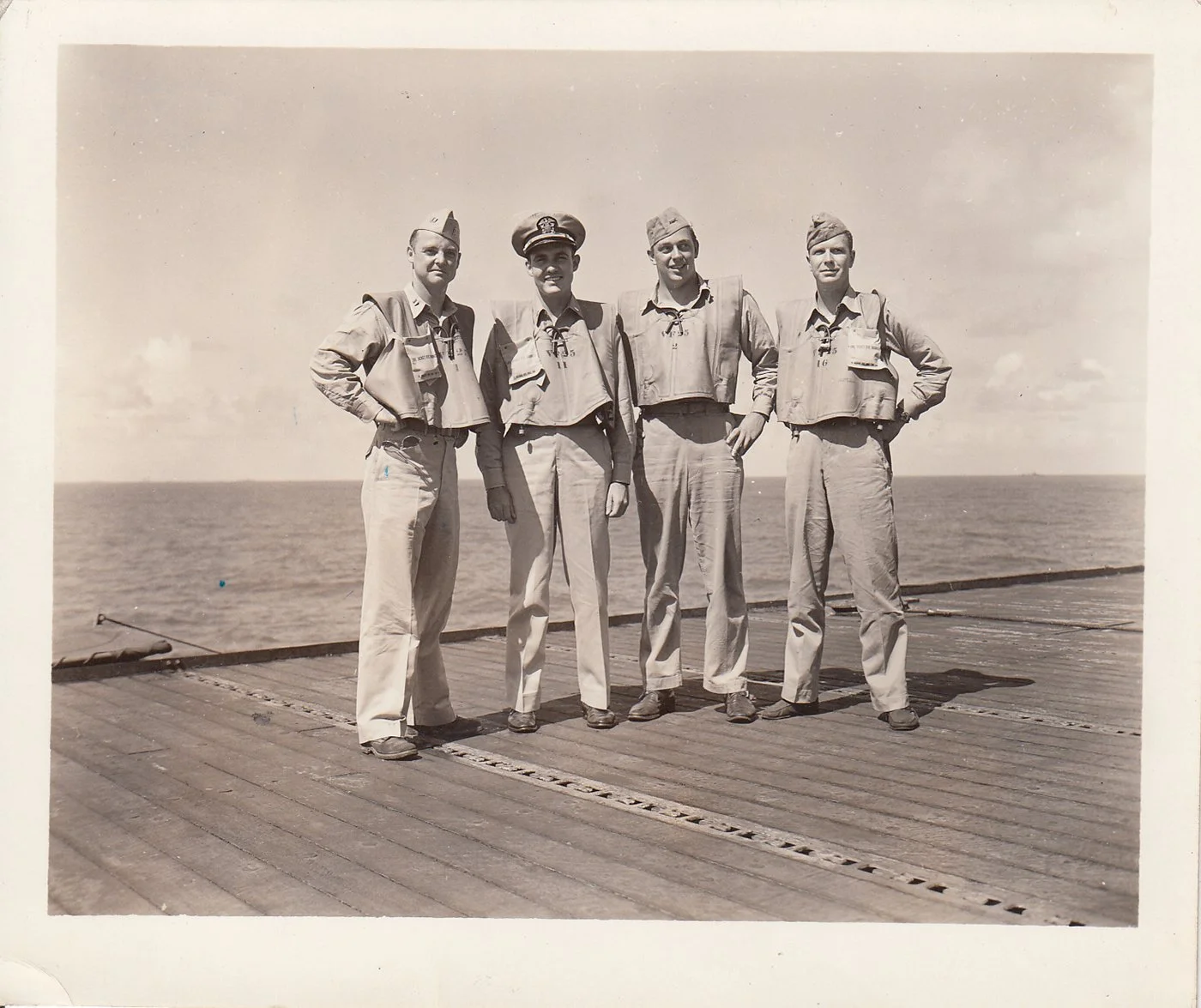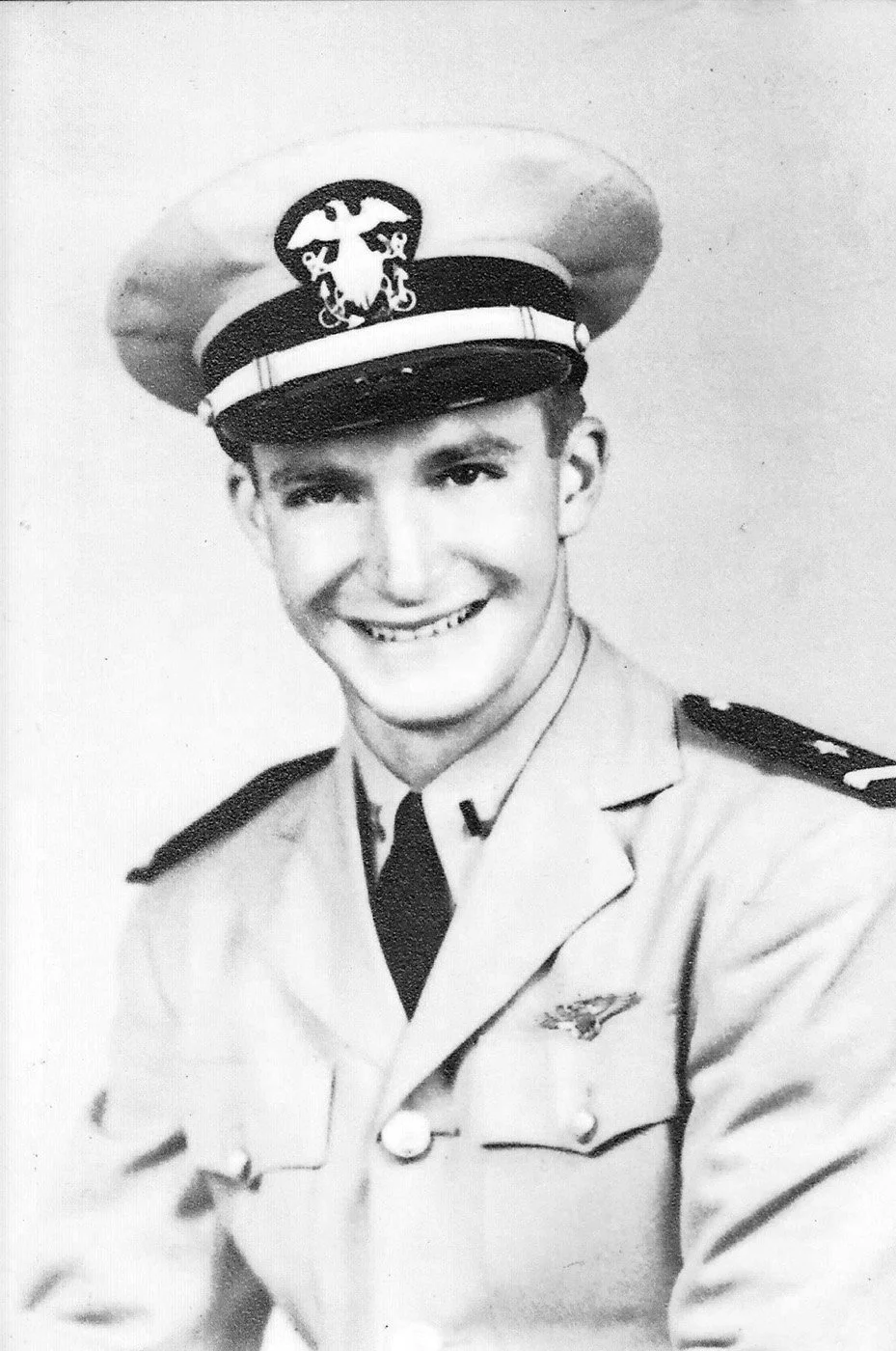
The Crew
Robert P. McConnell was the first captain of Cowpens. Respected by the crew, he narrowly survived the sinking of the USS Langley and Pecos in 1942 before assuming command of the Moo in January 1943. The inscription is dedicated to Bob Price, “with sincere personal regard and best wishes for continued success and good luck.” (Courtesy of Richard Price and the Price family)
Robert “Bob” Price was an experienced fighter pilot and natural leader who escaped the fall of Singapore in early 1942. He served aboard Cowpens first as commander of one of its fighter squadrons, then as Air Group 25 commander, and finally as the ship’s air officer. (Courtesy of Richard Price and the Price family)
Bob Price (left) and his division of fighter pilots from VF-25. Bill Stanton and Archibald “Big Mac” McIlwane (middle) disappeared after takeoff on their first combat mission to Wake in October 1943. Benny Farber (right) died in a landing accident off the Marianas Islands in February 1944. (Courtesy of Richard Price and the Price family)
On November 24, 1943, Lt. Alfred McGee was on approach for landing when a spray of gasoline from a leaking belly tank ignited a fireball. McGee was able to touch down successfully and then scampered across the wing as the ship’s firemen extinguished the blaze. (U.S. Navy)
On November 24, 1943, Lt. Alfred McGee was on approach for landing when a spray of gasoline from a leaking belly tank ignited a fireball. McGee was able to touch down successfully and then scampered across the wing as the ship’s firemen extinguished the blaze. (U.S. Navy)
Burial at sea for four Marines killed on December 4, 1943, when a damaged Hellcat fighter plowed through a gun bucket during an emergency landing. Ten other crewmen were injured in the accident. (U.S. Navy)
King Neptune and his Royal Court initiate the Cowpens pollywogs into the Ancient Order of the Deep as the Moo crosses the equator for the first time, on January 22, 1944. (U.S. Navy)
King Neptune and his Royal Court initiate the Cowpens pollywogs into the Ancient Order of the Deep as the Moo crosses the equator for the first time, on January 22, 1944. (U.S. Navy)
Ensign Ed Haley joined Cowpens as a replacement pilot in the winter of 1943. A thoughtful diarist during his time aboard, Ed earned the nickname Stump for his diminutive height. (Courtesy of Glenn Haley)
Gun camera footage from an unidentified Cowpens fighter attacking an enemy plane over Saipan in June 1944. The Moo’s air group lost five planes, with two men killed, in the first few days of this operation. (U.S. Navy)
Herbert Watson Taylor was the Moo’s second captain. Quiet and introspective, Taylor had a “still waters run deep” style of command that put him at odds with his pilots throughout the fall of 1944. (U.S. Navy/U.S. National Archives)
Lt. Commander Clement “Clem” Craig helped lead Cowpens’ second fighter squadron, VF-22, and was the ship’s greatest fighter ace. He finished the cruise with 12.5 aerial kills—including five shot down in a single mission, making him one of an elite few Navy pilots who could claim “ace-in-a day” status. Clem and his fliers had a strained relationship with Captain Taylor for much of their time aboard. (Courtesy of Jerry Craig)
Captain George DeBaun was the third commanding officer of Cowpens. DeBaun’s cheerfully profane personality and sense of humor quickly won over the crew. He was also a skilled sailor, a trait that helped pull the ship through its most difficult hours. (Courtesy of Duncan Koler)
On February 25, 1945, one of VF-46’s inexperienced pilots bounced his plane over the crash barrier and plowed into the aircraft spotted forward. Two crewmen were knocked overboard and lost. (U.S. Navy)
The scene in a squadron ready room aboard Cowpens after the announcement of the Japanese surrender, August 15, 1945. Frank Martinich is in the lower right corner, with his cigar. (U.S. Navy)
The Moo’s last wartime captain, Herbert Duckworth. He served as air officer aboard Lexington during the Battle of the Coral Sea in May 1942, then helped pioneer some of the multi-carrier tactics and formations that helped the Navy on its march to Tokyo. Although he arrived aboard Cowpens in late July 1945, an assignment in occupied Japan delayed his assumption of command until after the surrender. (U.S. Navy)















